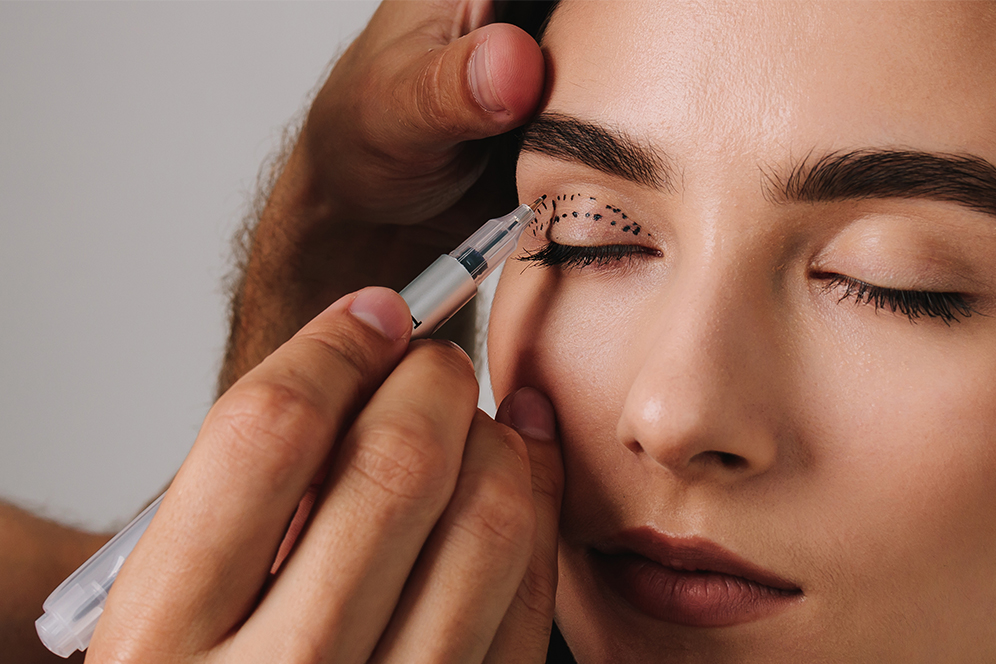
Our eyes are not only the gateway to the world but also one of the first features noticed by others, often leaving a lasting impression. They play a crucial role in shaping our overall appearance and expressiveness. However, as we age, the skin around our eyes loses elasticity, leading to sagging eyelids that can make us look tired or older than we feel. This excess skin can accumulate on both the upper and lower eyelids, causing puffiness and impacting our vision. In some cases, injuries or certain conditions may worsen these issues, leading to vision problems. Eyelid surgery, also known as blepharoplasty, offers a transformative solution to restore a youthful look. This procedure not only rejuvenates the eyes but can also boost confidence, helping you look and feel your best. In this article, we will learn about eyelid operation, its procedure, and the various benefits it can provide!
Understanding Eyelid Operation
Eyelid surgery, also known as blepharoplasty, is a procedure that removes excess skin and fat from the eyelids. As we age, the skin around the eyes loses elasticity, and the muscles supporting the eyelids weaken, leading to sagging and puffiness. This can cause droopy upper eyelids, bags under the eyes, and sagging eyebrows. Severely drooping eyelids can block your side vision, particularly in the upper part of your sight. Surgery for drooping eyelids can correct these issues and improve vision. However, it's important to note that blepharoplasty does not address dark circles or facial wrinkles.Types Of Blepharoplasty
- Cosmetic Eyelid Surgery
- Functional Blepharoplasty
Ideal Candidate For Blepharoplasty
The ideal candidates for blepharoplasty are typically individuals over the age of 30 who are in good health and do not have any existing eye health conditions. However, if you have any underlying health issues, it’s essential to consult with your healthcare provider before considering the procedure. Individuals with the following conditions should consult their doctor before opting for this procedure.- Eye diseases like glaucoma or dry eyes
- Thyroid disorders
- Cardiovascular disease
- High blood pressure
- Diabetes
What To Expect During A Blepharoplasty Procedure?
During a blepharoplasty procedure, the surgeon tailors the approach based on your desired outcomes, which may involve enhancing the upper eyelids, lower eyelids, or both. The procedure is performed under local anesthesia with some IV sedation to relax the patient. It is a daycare procedure, meaning the patient is discharged from the hospital on the same day.-
Upper Blepharoplasty
-
Lower Blepharoplasty
Risks
Like any surgery, blepharoplasty carries minimal risks, though complications are very rare. Potential issues that may arise include:- Bleeding
- Infection
- Dry eyes
- Discoloration of the eyelids
- Scarring
- Abnormal eyelid folding
- Difficulty fully closing the eyes
- Possible vision changes
Post-Eyelid Surgery Care: Do's And Don'ts
Do:- Apply ice packs on your eyes for 10 minutes every hour the night after surgery. The next day, apply them 4 to 5 times to help with swelling.
- Follow the prescribed eye drops or ointments as directed.
- Sleep with your head elevated above your chest for a few days.
- Use cool compresses to help reduce swelling.
- Wear dark sunglasses to shield your eyelid skin from the sun and wind.
- Do strenuous activities for at least a week, including heavy lifting, swimming, jogging, or aerobics.
- Smoke or consume alcohol.
- Rub your eyes.
- Wear contact lenses for about two weeks.
Why Choose WIINS Aesthetic Clinic At WIINS Hospitals?
If drooping or sagging eyelids are a concern for you, opt for an eyelid surgery at WIINS Aesthetic Clinic with our plastic surgeon, Dr Deyonna Prabhu, at WIINS Hospitals. It’s a transformative solution. Performed by our experts, this advanced procedure removes excess skin and fat to rejuvenate the eye area. Additionally, our personalized approach ensures natural, long-lasting results tailored to your needs. With precision and care, our highly skilled team of experts not only enhances your appearance but also restores comfort and boosts your confidence.References:
- https://www.mayoclinic.org/tests-procedures/blepharoplasty/about/pac-20385174
- https://my.clevelandclinic.org/health/treatments/8409-eyelid-surgery-blepharoplasty
- https://www.aao.org/eye-health/treatments/eyelid-surgery
- https://www.hopkinsmedicine.org/health/treatment-tests-and-therapies/eyelid-lift
- https://www.plasticsurgery.org/cosmetic-procedures/eyelid-surgery
- https://medlineplus.gov/ency/article/002977.html

